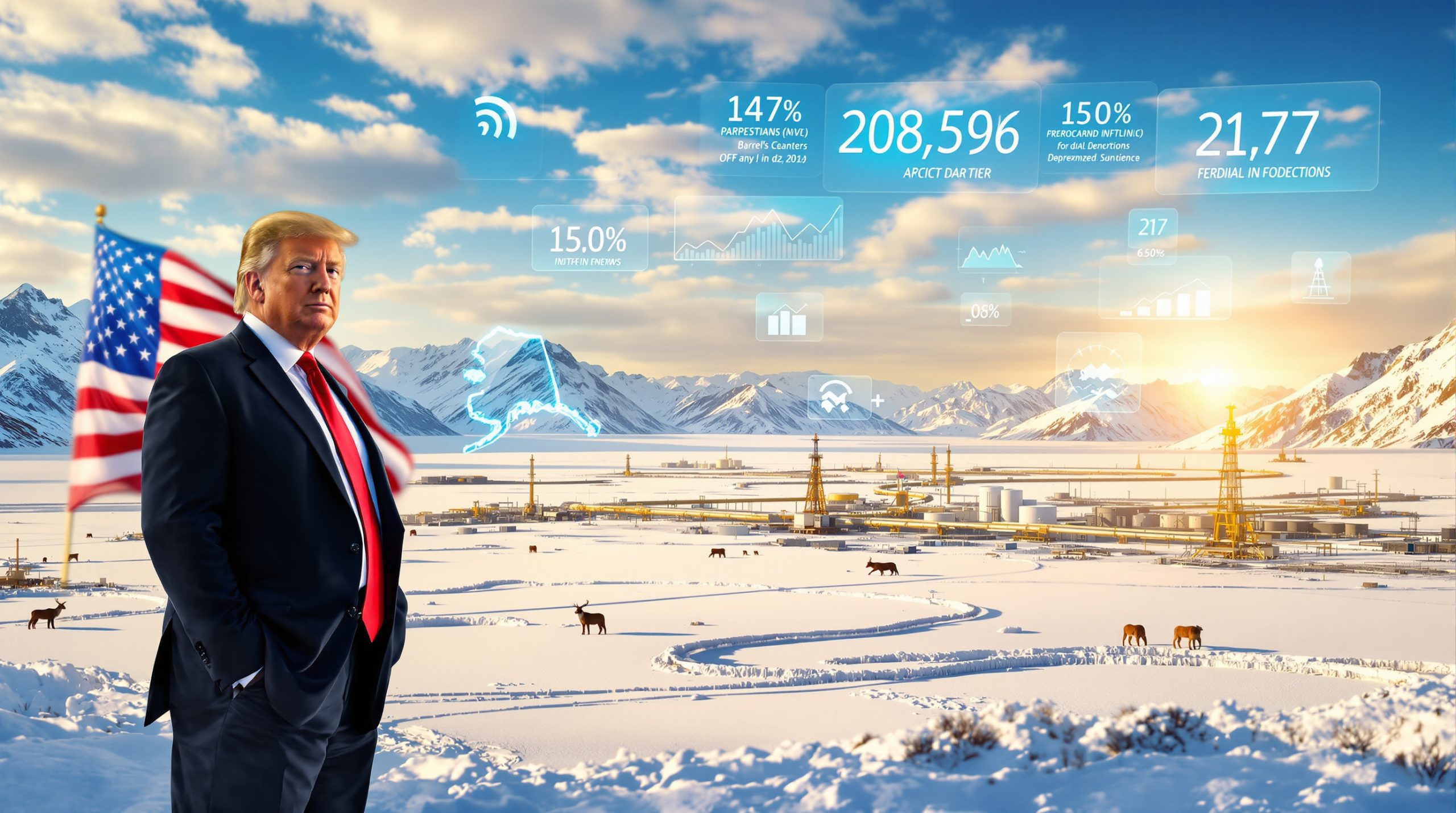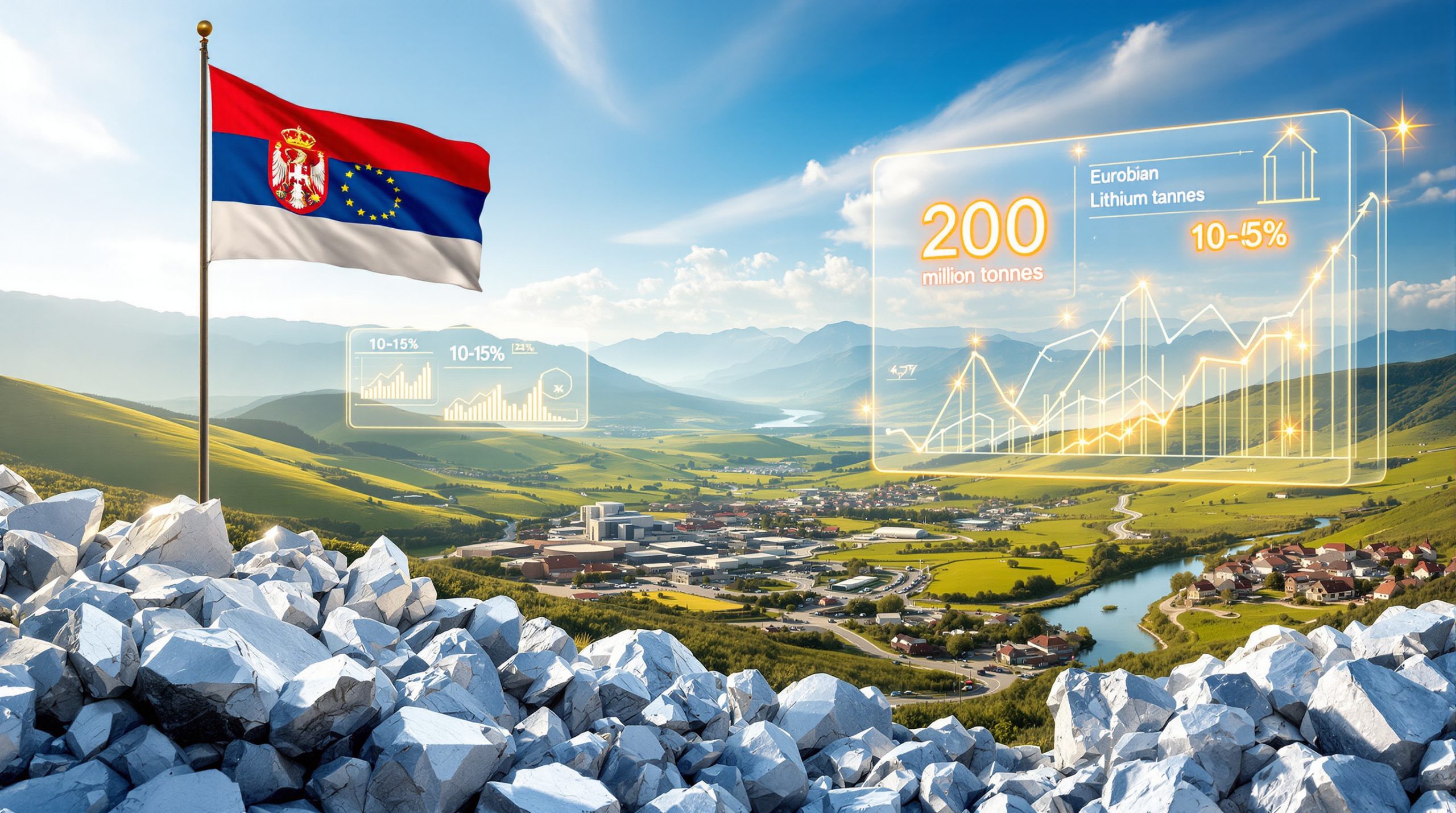Trump's Arctic Drilling Policy Reversal: Reshaping Alaska's Energy Future
The Trump administration's November 2024 decision to rescind Arctic drilling restrictions marks a pivotal moment in American energy policy. By reversing Biden-era protections across Alaska's vast petroleum reserves, this Trump Arctic drilling policy reversal unlocks access to an estimated 8.7 billion barrels of recoverable oil and fundamentally alters the trajectory of domestic energy production. The reversal applies to the 23-million-acre National Petroleum Reserve-Alaska (NPR-A), where previous limitations had complicated drilling operations for major operators including ConocoPhillips, Santos Ltd., and Repsol SA.
What Led to Trump's Arctic Drilling Policy Reversal?
The Biden Administration's Conservation Framework
The foundation for Trump's reversal lies in the comprehensive restrictions implemented during Biden's presidency. In 2024, the Biden administration designated 13 million acres within the NPR-A as "special areas," creating substantial barriers to future oil and gas development. These designations maintained leasing prohibitions across 10.6 million acres of the reserve, effectively placing nearly half of the NPR-A off-limits to energy companies.
The economic implications of these restrictions were substantial. The 8.7 billion barrels of recoverable oil locked away under Biden's framework represented a significant portion of America's accessible Arctic reserves. For companies like ConocoPhillips, which operates the Willow project within the NPR-A, these limitations created operational complications and restricted expansion opportunities in regions where they had already established infrastructure and expertise.
Environmental considerations drove much of Biden's Arctic strategy. The special area designations prioritised wildlife habitat protection, climate change mitigation, and preservation of indigenous subsistence rights. However, critics argued these measures came at the expense of energy security and economic development opportunities in Alaska, where oil and gas revenues constitute a critical component of the state's fiscal structure.
Political and Economic Drivers Behind the Reversal
Energy independence emerged as the central justification for Trump's Arctic drilling policy reversal. Interior Secretary Doug Burgum characterised the move as restoring "common-sense management" while strengthening "American Energy Dominance" and reducing "reliance on foreign oil." This rhetoric reflects the Trump administration's broader energy agenda, which prioritises domestic fossil fuel production as a cornerstone of national security strategy.
Alaska's economic development priorities provided additional momentum for the policy change. The state's official forecasts project Arctic crude production will climb from 15,800 barrels per day in fiscal 2023 to 139,600 barrels per day by fiscal 2033 – an increase of nearly 900 percent. These projections assume successful implementation of the drilling expansion and highlight the substantial revenue potential for both state and federal governments.
Industry pressure from major operators also influenced the decision. ConocoPhillips had been actively seeking opportunities to expand exploration activities near its existing Willow project, but Biden's restrictions created regulatory uncertainty that complicated long-term development planning. Furthermore, other companies, including Australian energy firm Santos Ltd. and Spanish multinational Repsol SA, similarly faced limitations on their ability to pursue new opportunities in the region.
Which Arctic Regions Are Now Open for Development?
National Petroleum Reserve-Alaska (NPR-A) Expansion
The policy reversal primarily affects the 23-million-acre NPR-A, where Trump's executive order on critical minerals eliminates the special area designations that had restricted access to significant portions of the reserve. The rescinded restrictions apply to the areas Biden had designated for enhanced environmental protection, though specific details about which sub-regions are now accessible for leasing remain to be clarified through subsequent Interior Department announcements.
Key NPR-A Statistics:
- Total acreage: 23 million acres
- Previously restricted special areas: 13 million acres
- Areas with maintained prohibitions under Biden: 10.6 million acres
- Estimated recoverable reserves: 8.7 billion barrels
The regulatory framework governing NPR-A development has reverted to earlier management guidelines, streamlining the permitting process for drilling operations. This represents a significant departure from the enhanced environmental review requirements implemented during the Biden administration, potentially accelerating the timeline for new projects from initial exploration through production startup.
Companies with existing operations in the NPR-A stand to benefit most immediately from the policy change. ConocoPhillips, which has invested heavily in Arctic infrastructure through its Willow project, can now pursue expansion opportunities that were previously complicated by regulatory restrictions. The company's existing operational expertise and established supply chains provide competitive advantages for developing newly accessible areas.
Arctic National Wildlife Refuge (ANWR) Coastal Plain
Beyond the NPR-A, the Trump administration has also reopened the 1.56-million-acre coastal plain of the Arctic National Wildlife Refuge to oil and gas leasing. This action, implemented through executive directive following Trump's inauguration, represents one of the most environmentally controversial aspects of the Arctic drilling expansion.
The Interior Department has announced plans for a winter lease sale covering both the NPR-A and ANWR coastal plain regions. The timing of these sales will provide the first concrete indication of industry interest in the newly accessible areas and establish baseline lease prices that will influence future development economics.
ANWR's coastal plain has been the subject of decades-long political battles between energy development advocates and environmental preservation groups. Previous attempts to open the refuge to drilling have faced significant legal challenges, and the current initiative is likely to encounter similar opposition through federal court systems.
Regulatory Framework Changes
The Trump administration's approach involves returning to management guidelines that predate many of the environmental protections implemented in recent decades. This regulatory rollback includes streamlined permitting processes and modified environmental review requirements, though specific details about timeline reductions and procedural changes have not been fully disclosed.
The shift represents a fundamental philosophical change in how the federal government balances energy development priorities against environmental conservation goals. While supporters argue this approach will reduce regulatory burden and accelerate project development, critics warn that streamlined processes may inadequately address ecological risks and climate change implications.
How Will This Impact Oil Production and Energy Markets?
Production Forecasts and Capacity Projections
Alaska's official production forecasts paint an optimistic picture of the Arctic drilling expansion's potential impact. Current baseline production from Arctic reserves stands at 15,800 barrels per day, but state projections anticipate this figure will surge to 139,600 barrels per day by 2033. This dramatic increase assumes successful exploration results, infrastructure development, and operational ramp-up across newly accessible areas.
Arctic Production Timeline Projections:
- 2023 baseline: 15,800 barrels per day
- 2033 target: 139,600 barrels per day
- Percentage increase: 882%
- Total recoverable reserves unlocked: 8.7 billion barrels
However, these projections come with significant assumptions about exploration success rates, infrastructure investment, and operational efficiency in extreme Arctic conditions. Historical experience with Arctic drilling projects suggests that actual production may vary considerably from initial forecasts due to technical challenges, cost overruns, and environmental factors that complicate operations.
The timeline for achieving these production targets depends heavily on the pace of lease sales, exploration activities, and infrastructure development. Most industry analysts expect a multi-year lag between the policy reversal and meaningful production increases, as companies must complete exploration programmes, secure financing, and construct facilities before oil begins flowing.
Market Implications for Energy Independence
The Arctic drilling expansion aligns with broader Trump administration objectives to enhance American energy independence and reduce reliance on foreign oil suppliers. An additional 139,600 barrels per day of domestic production represents a modest but strategically significant contribution to U.S. energy security, particularly given the geopolitical stability advantages of domestic reserves.
From a market perspective, increased Arctic production could provide price stability benefits by diversifying supply sources and reducing exposure to international market volatility. However, the relatively small scale of projected production increases means the direct impact on global oil prices will likely be limited, particularly considering the US oil production trends from other regions like the Permian Basin.
The strategic value of Arctic reserves extends beyond immediate production volumes. These reserves serve as a long-term insurance policy against supply disruptions and provide the United States with additional leverage in international energy diplomacy. The development of Arctic infrastructure also creates options for future expansion if global energy dynamics shift or if technological advances improve the economics of extreme-environment drilling.
Infrastructure Development Requirements
Realising the production potential of newly accessible Arctic areas will require substantial infrastructure investments across multiple categories. Pipeline capacity represents the most critical constraint, as existing transportation systems may lack sufficient capacity to handle projected production increases from both the NPR-A and ANWR coastal plain.
Key Infrastructure Requirements:
- Pipeline expansion or new construction for increased crude transport
- Port facility upgrades for Arctic shipping and logistics support
- Power generation and transmission systems for remote operations
- Housing and support facilities for workforce deployment
- Emergency response and spill containment capabilities
The extreme Arctic environment creates unique technical challenges that drive infrastructure costs well above those typical in lower-latitude oil fields. Equipment must withstand temperatures well below freezing for extended periods, while logistics operations must account for seasonal limitations on transportation and supply delivery.
Companies like ConocoPhillips benefit from existing infrastructure investments that can be leveraged for expanded operations. The Willow project's infrastructure provides a foundation for nearby development, potentially reducing the capital requirements for accessing adjacent reserves. However, more distant areas within the NPR-A or ANWR coastal plain may require entirely new infrastructure networks, significantly increasing development costs and timeline requirements.
What Are the Environmental and Economic Trade-offs?
Wildlife and Ecosystem Considerations
Arctic drilling expansion presents significant ecological challenges that must be weighed against economic benefits. The affected regions support critical wildlife populations, including caribou herds that depend on coastal plain areas for calving grounds and polar bears that rely on sea ice habitats increasingly threatened by climate change.
Primary Environmental Concerns:
- Arctic wildlife migration: Disruption of caribou calving and migration routes
- Marine ecosystems: Impacts on marine food chains from offshore development
- Climate implications: Greenhouse gas emissions from increased fossil fuel extraction
- Habitat fragmentation: Infrastructure development effects on pristine ecosystems
The timing of drilling activities becomes critical for minimising wildlife impacts. Many Arctic species follow seasonal patterns that create windows of reduced activity when industrial operations can proceed with minimal ecological disruption. However, the harsh Arctic environment also limits the operational window for construction and drilling activities, creating scheduling conflicts between environmental protection and economic efficiency.
Technological advances in drilling and infrastructure design offer potential solutions for reducing environmental impacts. Modern drilling techniques can access larger areas from smaller surface footprints, while improved waste management and spill prevention systems address some historical concerns about Arctic operations.
Economic Benefits vs. Environmental Costs
The economic case for Arctic drilling expansion extends beyond direct oil revenues to encompass broader regional development benefits. Alaska's economy depends heavily on resource extraction industries, and expanded Arctic production could generate significant employment opportunities in regions with limited economic alternatives.
| Economic Benefits | Environmental Concerns |
|---|---|
| Job creation in Alaska energy sector | Wildlife habitat disruption |
| Federal and state tax revenue increases | Marine ecosystem degradation |
| Enhanced national energy security | Increased carbon emissions |
| Infrastructure investment in remote regions | Indigenous subsistence impacts |
| Reduced foreign oil import dependence | Long-term climate change acceleration |
Revenue projections from Arctic drilling suggest substantial benefits for Alaska's state budget, which relies heavily on oil and gas royalties to fund public services and provide resident dividends. However, these benefits must be evaluated against the long-term costs of environmental damage and climate change impacts that extend far beyond Alaska's borders.
Indigenous Community Perspectives
Alaska Native communities present diverse perspectives on Arctic drilling expansion, with some supporting development for its economic benefits while others express concerns about impacts on traditional subsistence practices. These communities have constitutionally protected rights to subsistence hunting and fishing that could be affected by industrial development in critical wildlife areas.
Key Indigenous Considerations:
- Consultation requirements under federal law
- Protection of traditional subsistence rights
- Revenue-sharing opportunities through Alaska Native corporations
- Cultural preservation concerns related to landscape changes
- Employment opportunities for community members
The consultation process with indigenous communities represents both a legal requirement and a practical necessity for successful Arctic development. Companies must work with Alaska Native corporations and community leaders to address concerns and ensure development proceeds in ways that respect traditional practices and cultural values.
Which Companies Stand to Benefit Most?
Major Players in Arctic Development
ConocoPhillips emerges as the primary beneficiary of Trump's Arctic drilling policy reversal due to its existing operational presence and infrastructure investments in the region. The company's Willow project provides an established platform for expansion into newly accessible areas, while its Arctic operational expertise positions it to capitalise on development opportunities more quickly than competitors starting from scratch.
The policy reversal removes regulatory complications that had previously constrained ConocoPhillips' growth plans in the NPR-A. The company can now pursue exploration activities in areas adjacent to existing operations, potentially leveraging shared infrastructure to reduce development costs and accelerate production timelines.
Santos Ltd., the Australian energy company, represents another significant beneficiary with existing Arctic operations and growth potential in newly opened areas. Santos has demonstrated commitment to challenging operational environments and possesses technical capabilities relevant to Arctic development requirements.
Repsol SA, the Spanish multinational energy company, brings international expertise and capital resources to Arctic development opportunities. The company's strategic positioning in newly accessible areas could provide access to substantial reserve additions for its global portfolio.
Armstrong Oil & Gas exemplifies the small-cap opportunities created by Arctic drilling expansion. Smaller operators with specialised expertise or risk tolerance for frontier regions may find attractive investment opportunities in areas overlooked by major integrated oil companies.
Investment Opportunities and Market Dynamics
Arctic drilling operations require substantial capital investments and technical expertise, creating barriers to entry that favour established operators with proven capabilities. The extreme operational environment demands specialised equipment, experienced personnel, and robust financial resources to manage the extended development timelines typical of Arctic projects.
Investment Considerations:
- High capital requirements for infrastructure development
- Extended payback periods due to harsh operating conditions
- Regulatory and environmental risks that could affect project viability
- Technology partnerships with service companies specialising in cold-weather operations
- Access to specialised equipment designed for Arctic conditions
Service companies with Arctic expertise stand to benefit significantly from increased development activity. Companies providing specialised drilling equipment, cold-weather technology, logistics support, and environmental monitoring services may experience increased demand as operators expand their presence in newly accessible areas.
The risk profile of Arctic investments requires careful evaluation of potential returns against operational challenges and regulatory uncertainties. While the policy reversal reduces some regulatory risks, environmental opposition and potential future policy changes remain significant considerations for long-term investment planning.
What Legal and Regulatory Challenges Lie Ahead?
Expected Legal Opposition
Environmental organisations and conservation groups are preparing comprehensive legal challenges to Trump's Arctic drilling policy reversal. The litigation strategy will likely focus on procedural requirements for environmental impact assessments, consultation obligations with indigenous communities, and compliance with federal wildlife protection statutes.
Anticipated Legal Challenges:
- Environmental impact assessment adequacy under NEPA
- Compliance with Endangered Species Act protections
- Indigenous community consultation requirements
- Marine Mammal Protection Act implications for offshore operations
- Climate change considerations in federal decision-making
Federal court jurisdiction over Arctic drilling cases creates potential for nationwide injunctions that could halt development activities pending resolution of legal challenges. Historical precedent from environmental litigation suggests environmental litigation can significantly delay or modify major federal energy policy changes, regardless of their ultimate legal validity.
The timing of legal challenges may coincide with critical phases of lease sales and exploration activities, creating uncertainty for companies planning substantial investments in Arctic development. Operators must factor potential delays and modifications into project planning and financial projections.
Regulatory Implementation Timeline
The Interior Department faces complex logistical challenges in implementing the Arctic drilling expansion while managing legal opposition and environmental review requirements. Lease sale scheduling must balance industry interest against administrative capacity and regulatory compliance obligations.
Implementation Milestones:
- Winter lease sale planning for NPR-A and ANWR coastal plain
- Environmental impact statement updates and revisions
- Consultation completion with Alaska Native communities
- Permit application processing and approval procedures
- Infrastructure development authorisation and oversight
Coordination between federal and state regulatory authorities adds complexity to the implementation process. Alaska state agencies play important roles in environmental permitting and oversight, while federal agencies retain jurisdiction over land management and species protection issues.
International Implications
Arctic drilling expansion creates potential diplomatic complications with other Arctic nations and international climate policy commitments. The Arctic Council, which includes all Arctic nations, has emphasised environmental protection and sustainable development principles that may conflict with aggressive fossil fuel extraction policies.
International Considerations:
- Arctic Council environmental protection agreements
- Climate change commitment compatibility under Paris Agreement
- Diplomatic relations with Arctic neighbours (Canada, Norway, Russia)
- International shipping implications for Arctic development
- Global energy transition policy coordination
The policy reversal may strain relationships with allied nations pursuing aggressive climate policies and renewable energy transitions. However, supporters argue that domestic energy production enhances national security and reduces dependence on potentially hostile foreign suppliers.
How Does This Compare to Previous Arctic Policy Shifts?
Historical Context of Arctic Drilling Policies
Arctic drilling policy has experienced dramatic swings across multiple presidential administrations, reflecting broader political divisions over energy development versus environmental protection. The Reagan administration initially promoted aggressive Arctic development, while subsequent Democratic administrations imposed various restrictions that Republican successors have repeatedly attempted to reverse.
Historical Arctic Policy Timeline:
- 1980s: Reagan-era development initiatives and initial ANWR proposals
- 1990s-2000s: Congressional battles over ANWR access rights
- 2008-2016: Obama administration restrictions and renewable energy emphasis
- 2017-2021: Trump 1.0 Arctic opening attempts and regulatory rollbacks
- 2021-2024: Biden conservation framework and drilling limitations
- 2025: Trump 2.0 comprehensive reversal and expansion
Each policy shift has created uncertainty for energy companies trying to plan long-term investments in regions where regulatory frameworks change dramatically with electoral outcomes. This political volatility has likely discouraged some potential investment and development activity, as companies weigh the risk of policy reversals against project economics.
Lessons from Past Arctic Development Attempts
Previous Arctic drilling initiatives provide important lessons about the challenges and opportunities facing current development efforts. Technological advancement has significantly improved the feasibility and environmental safety of Arctic operations since earlier attempts, while climate change has created both opportunities (reduced sea ice) and challenges (environmental sensitivity) for development.
Key Historical Lessons:
- Infrastructure investment requirements exceed initial estimates
- Environmental opposition creates sustained legal and regulatory challenges
- Technology advancement improves operational feasibility over time
- Economic viability depends heavily on global oil price cycles
- Political stability critically affects long-term project success
The experience of companies like ConocoPhillips in developing the Willow project provides contemporary evidence about the practical challenges and timelines required for successful Arctic operations. These lessons inform current projections about production timelines and infrastructure requirements for newly accessible areas.
What's the Long-term Outlook for Arctic Energy Development?
Technology and Innovation Factors
Technological advancement continues to improve the feasibility and environmental compatibility of Arctic drilling operations. Modern drilling techniques allow access to larger reserve areas from smaller surface footprints, while improved environmental monitoring systems provide better protection against ecological damage.
Technological Innovations:
- Extended-reach drilling reducing surface infrastructure requirements
- Advanced weather monitoring and prediction systems
- Improved spill prevention and response technologies
- Cold-weather equipment with enhanced reliability
- Remote operation capabilities reducing on-site personnel requirements
Digital technologies and automation offer potential for reducing operational costs and environmental impacts through more precise resource extraction and environmental monitoring. However, the extreme Arctic environment continues to present unique challenges that require specialised solutions not applicable in more temperate regions.
Global Energy Transition Considerations
Arctic oil development occurs against the backdrop of global energy transition efforts aimed at reducing fossil fuel consumption and greenhouse gas emissions. The timeline for achieving production from newly accessible Arctic reserves may extend into periods when global oil demand faces pressure from renewable energy adoption and electrification trends.
Energy Transition Implications:
- Global oil demand growth projections and peak demand timing
- Competition from renewable energy sources and electric vehicles
- Carbon pricing policies affecting fossil fuel economics
- International climate policy pressure on Arctic development
- Strategic value of domestic reserves during transition period
Supporters argue that Arctic oil provides essential energy security during the transition period while renewable technologies mature and scale. Critics contend that new fossil fuel development contradicts climate commitments and delays necessary renewable energy investment.
Future Policy Stability Questions
The history of Arctic drilling policy reversals raises important questions about the long-term stability of current development initiatives. Companies investing in Arctic infrastructure must consider the risk of future policy changes that could restrict or prohibit operations before investments are recovered.
Policy Stability Factors:
- Electoral cycle impacts on energy policy continuity
- Bipartisan consensus potential on energy security issues
- International climate pressure and diplomatic considerations
- Environmental monitoring results and ecological impact evidence
- Economic performance of initial development projects
The substantial infrastructure investments required for Arctic development create economic incentives for policy continuity once projects are established. However, the environmental sensitivity of the regions and ongoing climate change concerns ensure that Arctic drilling will remain a contentious political issue for the foreseeable future.
Balancing Energy Security with Environmental Stewardship
Trump's Arctic drilling policy reversal represents a fundamental shift in how the United States approaches the balance between domestic energy production and environmental protection. The decision to unlock access to 8.7 billion barrels of recoverable oil across 23 million acres of previously restricted federal land demonstrates the administration's prioritisation of energy independence over conservation concerns.
The timeline for implementing this policy shift extends well beyond the immediate political cycle, with Alaska projecting Arctic production increases from 15,800 barrels per day to 139,600 barrels per day by 2033. This nearly 900 percent increase assumes successful exploration, infrastructure development, and operational ramp-up across newly accessible areas in both the NPR-A and ANWR coastal plain.
Companies like ConocoPhillips, Santos Ltd., and Repsol SA stand positioned to benefit from reduced regulatory barriers and expanded access to Arctic reserves. However, the success of their development efforts will depend on navigating environmental opposition, managing extreme operational conditions, and adapting to potential future policy reversals as political control shifts in Washington.
The broader implications of this Trump Arctic drilling policy reversal must be considered within the context of Trump tariffs and global trade dynamics and emerging oil price stagnation analysis. Furthermore, while some analysts point to a potential Trump-linked oil price rally, the Arctic development timeline suggests any production impact will emerge gradually over the coming decade.
The long-term implications of this policy reversal extend far beyond immediate production figures to encompass fundamental questions about America's energy future, environmental responsibilities, and the role of fossil fuels in an evolving global energy landscape. While supporters emphasise energy security and economic benefits, critics highlight climate change implications and ecological risks that may persist long after the oil is extracted.
Disclaimer: This analysis is based on publicly available information and policy announcements as of November 2024. Arctic drilling operations involve substantial technical, environmental, and regulatory risks that could significantly affect actual outcomes. Production projections and economic estimates should be considered preliminary pending detailed exploration results and infrastructure development progress. Investors should conduct independent research and consider consulting qualified professionals before making investment decisions related to Arctic energy development.
Ready to Capitalise on the Next Major Energy Discovery?
Discovery Alert's proprietary Discovery IQ model delivers instant notifications on significant ASX mineral discoveries, helping investors identify emerging opportunities in the dynamic energy and resources sector. Explore Discovery Alert's historic discoveries to understand how major finds can generate substantial returns, then begin your 30-day free trial to position yourself ahead of market movements in critical minerals and energy stocks.




